Edward Hopper (1882 – 1967)
Get a Hopper Certificate of Authenticity for your painting or a COA for your Boucher drawing or print.
For all your Hopper artworks you need a Certificate of Authenticity in order to sell, to insure or to donate for a tax deduction.
How to get a Hopper Certificate of Authenticity is easy. Just send us photos and dimensions and tell us what you know about the origin or history of your Hopper painting, drawing or print.
If you want to sell your Hopper painting, drawing or print use our selling services. We offer Hopper selling help, selling advice, private treaty sales and full brokerage.
We have been authenticating Hopper and issuing certificates of authenticity since 2002. We are recognized Hopper experts and Hopper certified appraisers. We issue COAs and appraisals for all Hopper artworks.
Our Hopper paintings, drawings and print authentications are accepted and respected worlwide.
Each COA is backed by in-depth research and analysis authentication reports.
The Hopper certificates of authenticity we issue are based on solid, reliable and fully referenced art investigations, authentication research, analytical work and forensic studies.
We are available to examine your Hopper painting, drawing or print anywhere in the world.
You will generally receive your certificates of authenticity and authentication report within two weeks. Some complicated cases with difficult to research Hopper paintings or drawings take longer.
Our clients include Hopper collectors, investors, tax authorities, insurance adjusters, appraisers, valuers, auctioneers, Federal agencies and many law firms.
We perform Edward Hopper art authentication, appraisal, certificates of authenticity (COA), analysis, research, scientific tests, full art authentications. We will help you sell your Edward Hopper or we will sell it for you.
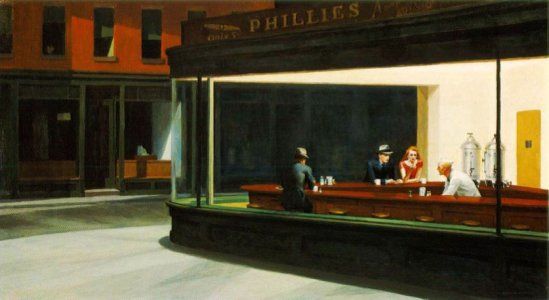

Edward Hopper was an American realist painter and printmaker. Hopper’s paintings have become iconic images in American visual culture. Hopper was born in upper Nyack, New York, north of New York City. Nyack was known for its yacht building industry. Hopper’s interest in art began at an early age, he would frequently draw and make watercolor paintings during his childhood. As a teenager, Hopper started making political cartoons and painting self-portraits.
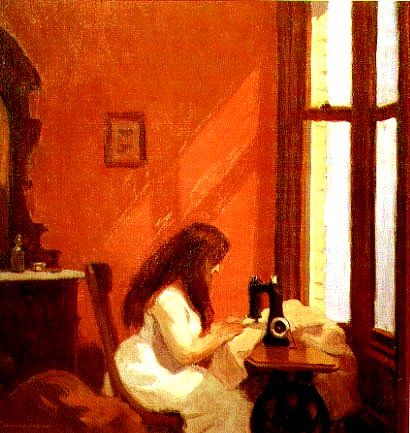
After high school Hopper thought about a career as a naval architect before deciding to build a career as an artist. Hopper’s parents persuaded him to study commercial art, so he could find employment as an illustrator. Hopper spent a year studying at a community college before transferring to New York Institute of Art in 1899. Hopper was instructed by William Merritt Chase, John Sloan and Robert Henri, well-known for their involvement in the Ashcan School of painting in New York City. Hopper had over six years of formal training, often painting from live models. As a student, Hopper painted alongside George Bellows and Rockwell Kent. Their instructors urged them to make bold moves, defying tradition in the art world.
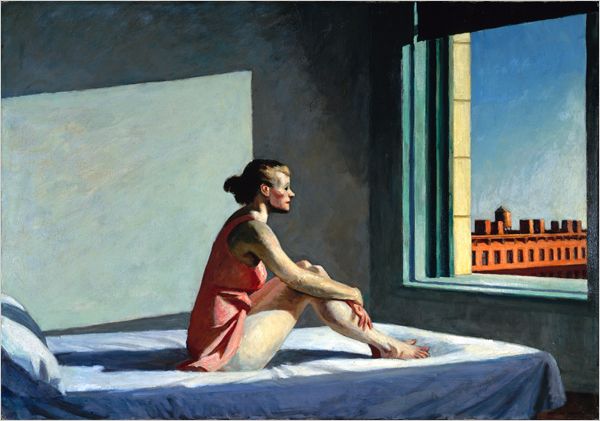
After graduating from the Institute, Hopper was hired by an advertising agency to design magazine covers for trade magazines. Hopper was unsatisfied working as an illustrator but kept the position for around fifteen years in order to make a steady living.
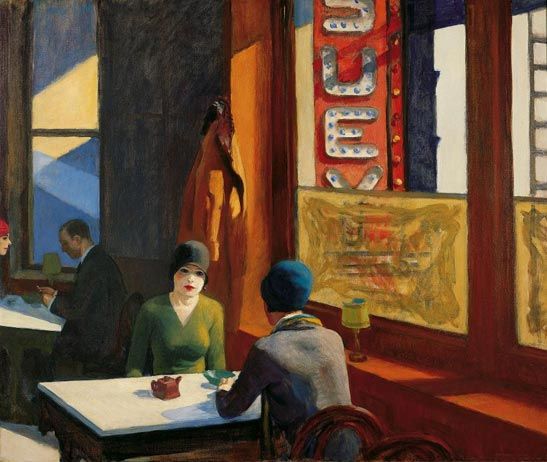
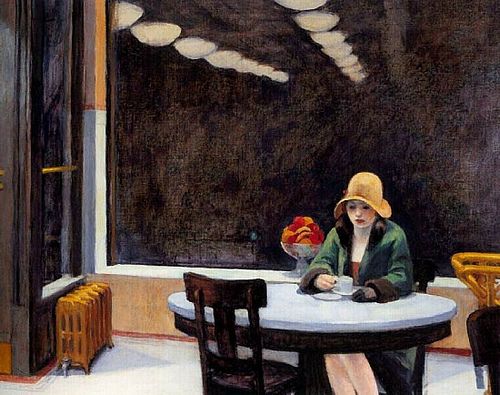

During the 1920s Hopper was able to make a few trips to Europe. Hopper was most drawn to Paris, though he avoided modern painting trends. Rather than looking at the work of Picasso, Hopper would study paintings by Rembrandt and other realist artists. As Hopper matured as an artist, he started to depict urban street life and café scenes. The French engraver, Charles Meryon, who painted Parisian scenes, greatly influenced Hopper’s style. After returning from Europe, Hopper continued to do illustration on a freelance basis to pay for his New York City painting studio.



In 1912 Hopper ventured to Gloucester, Massachusetts, where he made his first lighthouse paintings and a group of outdoor landscapes. The following year, Hopper sold his first painting at the Armory Show in New York. While Hopper was gaining recognition as an artist, his fame was slow to come. It took many years of struggle and hardship before he could make a living as a painter. Luckily, Hopper could fall back on illustrative work to make ends meet. Illustrations for film and theatre groups later influenced a series of paintings portraying performers.

In 1915 Hopper started to produce etchings, which eventually amounted to seventy, printable images. Around 1920 Hopper’s etchings started to rise in popularity. Simultaneously, Hopper was able to exhibit a number of his watercolor paintings at the Brooklyn Museum. Within the next couple of years Hopper was having solo exhibitions in New York City.


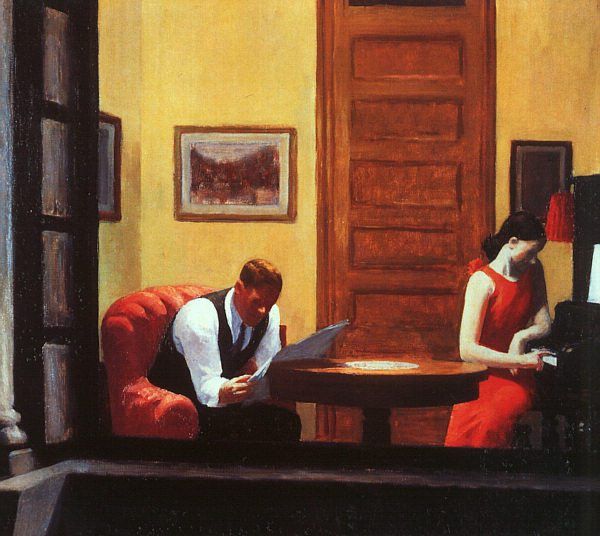
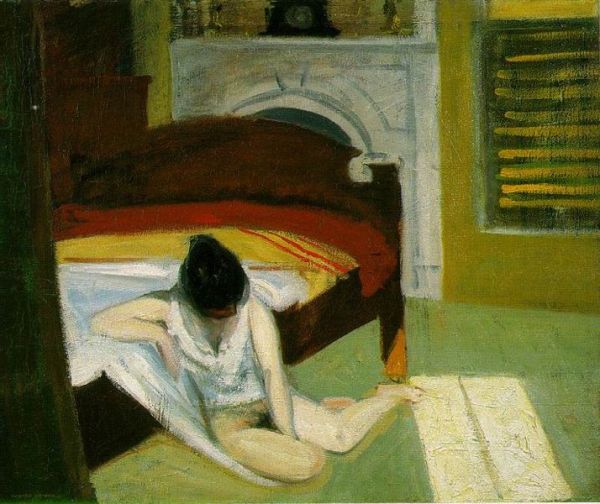
Hopper is best known for his large oil paintings with carefully constructed compositions. Most of his paintings contained figures, often a female. Common settings in Hopper’s paintings include gas stations, motels, restaurants, theatres, railroads, street scenes and seascapes. Hopper defined his own style of painting, creating stage-like scenes to depict American life in the early twentieth century.
Even during the Great Depression, Hopper was able to exhibit in the first Whitney biennial and at the Metropolitan Museum of Art. In 1933 the Museum of Modern Art held a retrospective of his work. During the 1930s and 1940s Hopper remained highly productive, only slowing down during the 50s and 60s because of health complications. Hopper died in his New York City studio in 1967.
Hopper has become one of the most influential names in twentieth century, American art. His images have become cultural icons and are frequently reproduced. Hopper’s paintings now belong to major museums and collections throughout the United States. Do you think you own a painting by Edward Hopper? Contact us. We are the Edward Hopper experts.
Reviews
1,217 global ratings
5 Star
4 Star
3 Star
2 Star
1 Star
Your evaluation is very important to us. Thank you.
